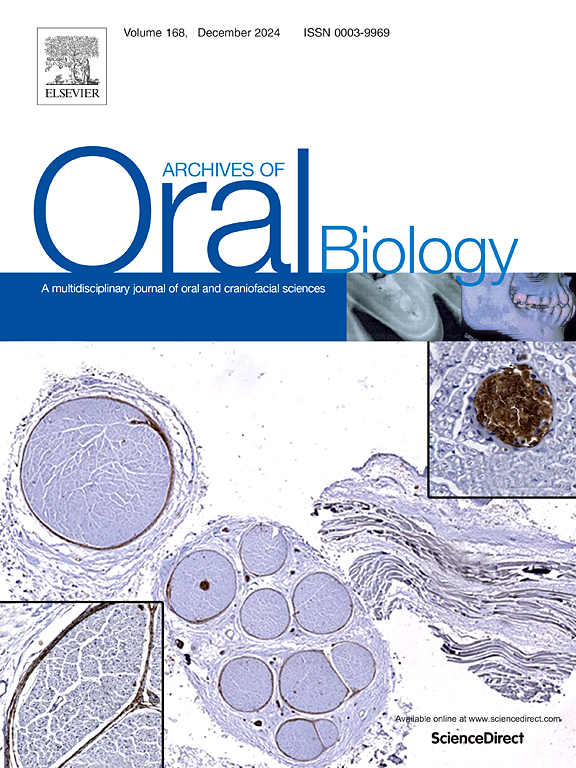Evaluation of tooth-specific optical properties for the development of a non-invasive pulp diagnostic system using Transmitted-light plethysmography: An in vitro study
IF 2.2
4区 医学
Q2 DENTISTRY, ORAL SURGERY & MEDICINE
引用次数: 0
Abstract
Objectives
Transmitted-light plethysmography (TLP) is an objective and non-invasive pulp diagnosis method that has already been validated for applications for incisors. However, there is a demand for TLP use in the molars, it has not yet been established for this application. This study investigated the optimal light source wavelengths for TLP in premolars, to establish a pulp diagnosis system based on measuring pulpal blood flow.
Design
One extracted incisor and one extracted premolar, which were fully developed and healthy, were prepared. The optical properties of model teeth filled with 0–30 % hematocrit contents in the pulp chamber were analyzed at 525, 590, and 625 nm wavelengths. The incident and transmitted light intensity of model teeth were measured to determine the optical density (O.D.) using a prototype plethysmograph (J.Morita) and a spectrometer. The significant differences in O.D. at each wavelength were analyzed using the Kruskal-Wallis test followed by the Steel-Dwass test as a post-hoc test. Light propagation through the teeth was also observed under a microscope.
Results
A statistically significant differences in O.D. were observed among the three wavelengths at all hematocrit concentrations (p < 0.05). The observation of light absorption and scattering in the whole teeth supported the optical measurement results.
Conclusion
The results indicated that the most appropriate wavelengths are 525 nm for incisors and 590 nm for premolars, as it balanced the light transmission through the tooth structure and the sensitivity for detecting changes in blood concentration. Further research is expected to expand the range of applications of TLP in premolars.
利用透射光体积脉搏图评估牙齿特异性光学特性以开发无创牙髓诊断系统:一项体外研究。
目的:透射光体积脉搏图(TLP)是一种客观、无创的牙髓诊断方法,已被证实可用于门牙。然而,在磨牙中有使用张力腿蛋白的需求,但尚未建立这种应用。本研究探讨了前磨牙TLP的最佳光源波长,建立了基于测量牙髓血流的牙髓诊断系统。设计:拔牙1个,拔牙前磨牙1个,发育完全,健康。在525、590和625 nm波长下,研究牙髓腔内填充0-30 %红细胞比容的模型牙的光学特性。利用体积描画仪和光谱仪测量模型牙齿的入射光强度和透射光强度,以确定光密度(od)。采用Kruskal-Wallis检验分析各波长od值的显著差异,随后采用Steel-Dwass检验作为事后检验。在显微镜下观察光通过牙齿的传播情况。结果:在不同血比容浓度下,三种波长的od值差异均有统计学意义(p )。结论:门牙和前磨牙的最佳波长分别为525 nm和590 nm,该波长平衡了光通过牙齿结构和检测血浓度变化的敏感性。进一步的研究有望扩大TLP在前磨牙中的应用范围。
本文章由计算机程序翻译,如有差异,请以英文原文为准。
求助全文
约1分钟内获得全文
求助全文
来源期刊

Archives of oral biology
医学-牙科与口腔外科
CiteScore
5.10
自引率
3.30%
发文量
177
审稿时长
26 days
期刊介绍:
Archives of Oral Biology is an international journal which aims to publish papers of the highest scientific quality in the oral and craniofacial sciences. The journal is particularly interested in research which advances knowledge in the mechanisms of craniofacial development and disease, including:
Cell and molecular biology
Molecular genetics
Immunology
Pathogenesis
Cellular microbiology
Embryology
Syndromology
Forensic dentistry
 求助内容:
求助内容: 应助结果提醒方式:
应助结果提醒方式:


